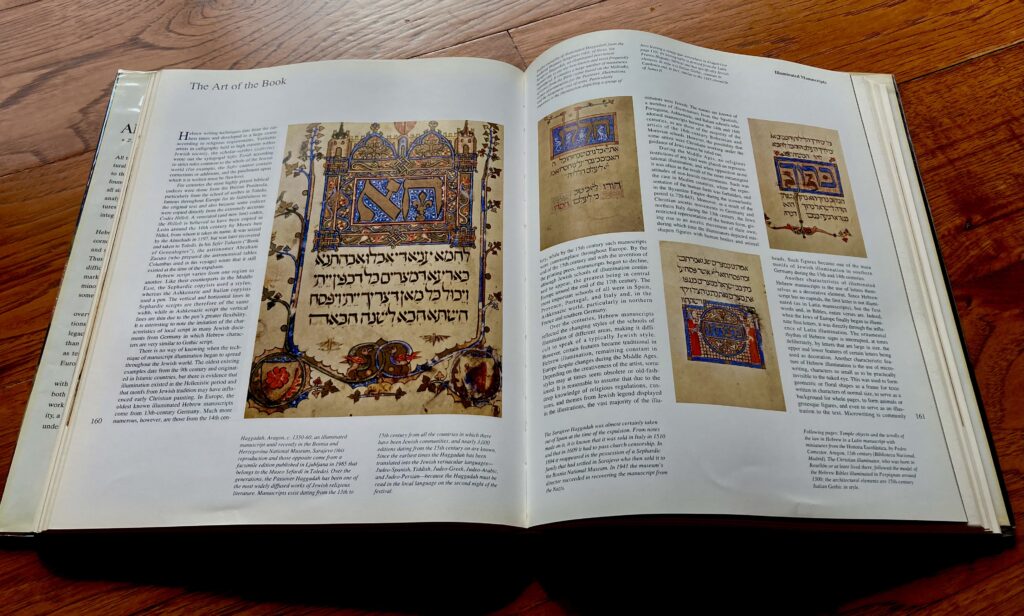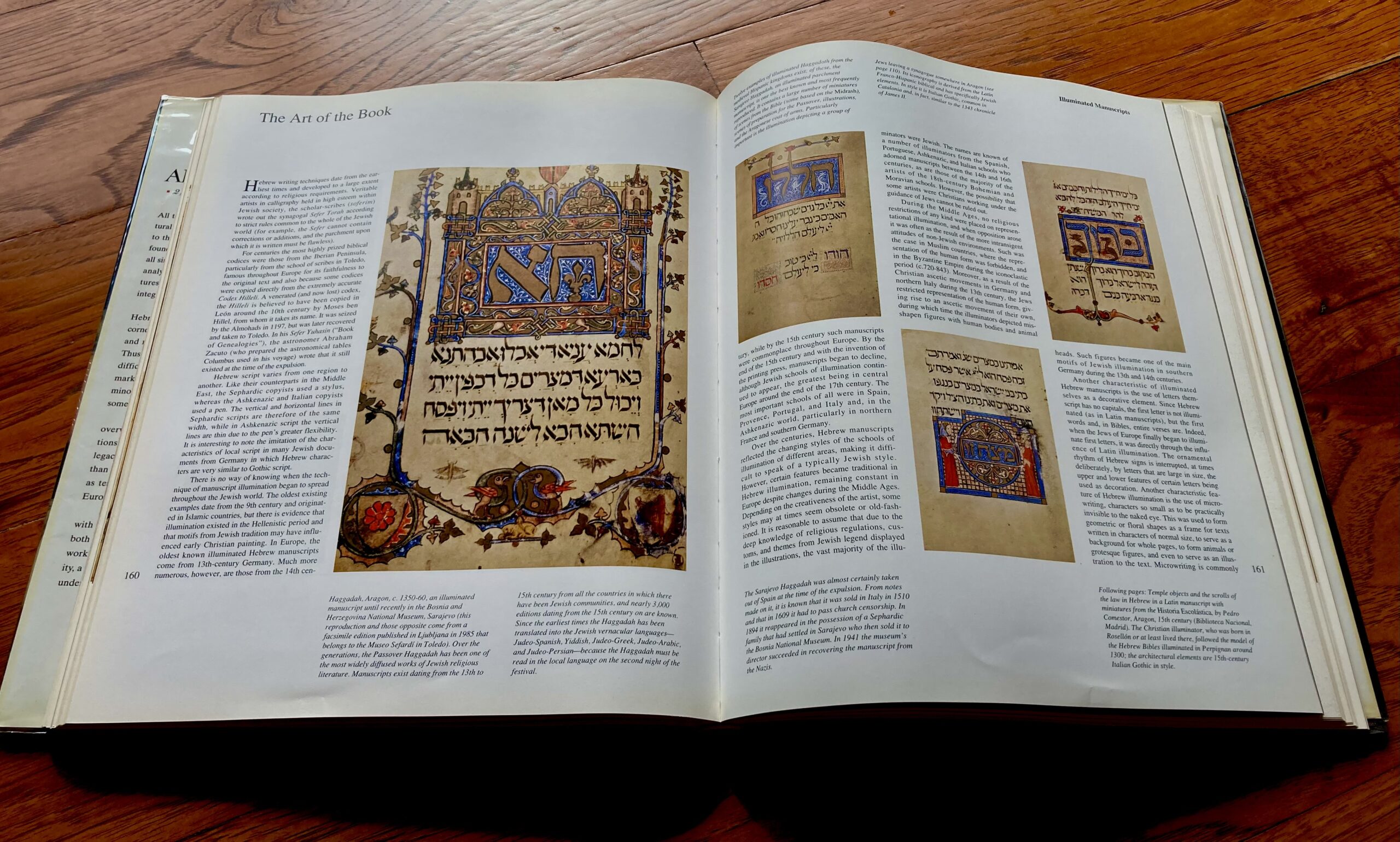
We Jewish Americans have a confession to make. There’s nothing we love more than inviting an uninitiated Gentile to our Passover Seder and with quiet glee subjecting them to a hazing of sorts. It’s a welcome into the family, an up-close-and-personal look at the filial chaos, the bittersweet joy, the wine-sodden exegesis on the Story of Exodus—a performance of riot, revolution, and ultimately, redemption. Think of it as the longest episode of Drunk History ever made (there are four cups of wine required during the course of the feast). Think of it, in fact, as our 11th commandment: Thou shalt tell the story of Exodus to your children, your children’s children, and their friends, your friends, the curious, the delivery person unfortunate enough to come to your door during the festivities.
Why is this night different from all other nights? This is the question that launches the feast.
The Passover Seder is one of the most important rituals in the Jewish faith. The Five Books of Moses (the Torah) command that each year we relay the story of the Israelites’ flight from Egypt, the great plagues that smote the land when Pharoah refused to give in to Moses, and the parting of the Red Sea that enabled terrified slaves to escape the Egyptian army. It is the story of God’s deliverance of us out of slavery and into our Covenant. The birth, not of a religion, but of a People.
Riot
First to the hazing—the riotous hilarity that was my family’s Seder when I was growing up. Picture the scene. A long white linen tablecloth disguising a combination of dining table, card table, and an old back door balanced on two wooden sawhorses snakes in a lopsided U to fit the crowd arrayed on a menagerie of mismatched chairs. In the section closest to the kitchen, the children’s table rocks with the impatient and the mortified. At least one young child is crying, two have stolen hardboiled eggs (a critical symbolic food shared at the beginning of the feast) and replaced them with raw ones. Teenagers argue with their parents that they are too old to recite the four questions, a ritual assigned to the children.
Why is this night different from all other nights?
On this night, my cousins, always three hours late to every celebration, will unwittingly hide the afikomen (a special piece of matzah wrapped in a napkin and secreted away at the beginning of the feast for the smallest children to find at the end of the evening) on a shelf in between Shakespeare and The Joy of Sex.
On this night, my mother, Mary Ann—born Southern Baptist then converted to Judaism to marry my father, Archie, an Indian Jew (yes, we exist) in the 1950’s—will reach into the bowl of hardboiled eggs and crack the shell gently on her elbow only to have raw yolk drench her sleeve (and plate!) as everyone around the “big” table howls with laughter. Gamely, she will reach for another one and – you guessed it – crack the second raw egg on her other elbow. Fool me once….
On this night, after close to an hour at the table with little more than matzah, horse radish, and parsley served, my best friend, a quiet Italian-American named Dolores, will lean over to me and ask, “When do we eat the actual meal?”
On this night, we celebrate with sincerity what it means to gain freedom after slavery while ending the feast with a rousing chorus of “One Little Goat,” the Jewish equivalent to “Ninety-nine Bottles of Beer on the Wall.”
The Passover Seder, while not part of the High Holy Day season, is arguably the most beloved of Jewish holidays. The reason is simple. Our High Holidays, Rosh Hashanah (the Jewish New Year) and Yom Kippur (the Day of Atonement) are celebrated in the Synagogue with long services of devotion and solemnity mixed with joy and reflection. They are spaces of communal spirituality, where we come together for deep reflection and renewal. But Passover is celebrated in the home, at the hearth, the most important “place” in the Jewish faith. While we celebrate the High Holidays as a People, it is at Passover where crazy, cacophonous, home-grown and chosen families tell the story of how we first became a People.
Revolution
Although Passover Seder is one of the oldest continuous rituals of faith in the world, reaching back over three thousand years, the Seder we celebrate today emerged out of revolutionary times in Judaea following the Crucifixion of Christ and the Destruction of the Second Temple in 70 C.E.
The word, “seder,” is Hebrew for “order’ and refers to the sequence of rituals that accompany the telling of the story of Exodus during the first two nights of Passover. These rituals include blessing the night, honoring the coming of spring (that hardboiled egg), and consuming the bitter herb (maror in Hebrew) dipped in salt water to represent the pain and suffering we experienced as slaves in Egypt. Even the children are given an important role that commences the story of Exodus. They are asked to go outside and knock on the door. The Elders welcome them in and, in reader-response fashion, the following exchange takes place.
“Where are you coming from?”
“Egypt.”
“Where are you going?”
“Israel.”
“What provisions have you brought?”
Upon this last question, the children break into song answering the question, “Why is this night different from all other nights?”
All of these rituals are the prequel to recounting the story of “when we were slaves in Egypt and God redeemed us” and eating the symbolic foods such as matzah (unleavened bread representing the haste in which the slaves fled Egypt), and chalek or charoset (depending on whether you are Sephardic or Ashkenazi) representing the sweetness of freedom. These foods, along with cups of sweet wine, become ritual morsels eaten in sequence as the story of Exodus unfolds. Yet even as the story begins, we are introduced to a set of characters to help us to interpret the true meaning of the relevant biblical passages.
The rabbis of the Haggadah were the revolutionaries of Judaea in the first century of the Common Era (C.E.) who fought to free themselves from the yoke (or yolk?) of Roman rule. These were the years of the rebellion which ended in 73 C.E. with the massacre of the last of the holdouts on Masada. After the destruction of the second Temple—the heart of Judaism at the time—these five Revolutionaries led the creation of what we know today as Rabbinical Judaism which replaced the Temple in Jerusalem as the center of what it means to be Jewish with the study of Law, the Torah, and the Talmud (the interpretations and commentary surrounding the Torah).
In direct response to the physical destruction of the nation of Judaea, these leaders defied the greatest power in the Western world to sustain and define their People to no longer be tied to a place, but to a faith and set of laws that governed who they were. They made these changes while still holding out hope that the Messiah would come to redeem the Children of Israel and usher in an age of lasting peace and freedom, not only for their people but for the world. This is the reason we place Elijah’s cup at the center of the Seder table and keep our doors open for the wandering stranger (or unfortunate delivery person) who comes to us for food and rest.
As testament to their heritage, across the world Jewish families read from the Haggadah which, in Hebrew, translates to the “Telling.” The earliest appearance of a Haggadah is about 170 C.E., but the version that we use in the 21st Century was finalized roughly around the middle of the eighth century.
Redemption
It is now 2015 and I am at my own seder with my husband, child, cousins, and in-laws. We are at least two “official” cups of wine in (most of us have cheated and it’s closer to four) when we reach the strangest and most impenetrable passages of the Haggadah. Each person around the table reads one paragraph. My mother-in-law, Pearl, a warm, precious heart from small-town Oklahoma, begins her portion. Her voice sounds like the diminutive medium in the movie Poltergeist but with an accent as thick as the air in a West Texas dirt storm. Unbeknownst to her, I intentionally placed her so that she would have to read this paragraph; she begins tentatively:
“And it is related of Rabbi EliezAR, Rabbi Joshua, Rabbi El…ElAAZR ben Azzzraah, Rabbi Ak..eeba?, and Rabbi Tarfon that they met … and spoke of the departure from Egypt.”
She looks up.
“Did I say that alright?”
This is a version of Passover torture I call “Haggadah-hazing,” in which I saddle the newbie with the most complicated transliterations and obscure passages of the night (I assure you I am not alone in my twisted humor). The rabbis appear early in the story, but it is only after the naming of the ten plagues, allegedly representing the mere finger of God, that the sages return in flights of rhetorical analyses that leave the readers dizzy and somewhat nauseated (from hunger or the text, they remain forever uncertain). Amid the snickers at the impossible pronunciations and mathematical allusions to the metaphor of God’s hand and the number of plagues, the moment inevitably arrives when someone asks, “What are they talking about?”
We are at the point in the Telling that seems to have little to do with the actual story line—an apparent tangent in which five of our most famous rabbis in Jewish History, the same radicals who defied the Romans, engage in an all-night conversation to determine the true might of God.
“With a strong hand and an outstretched arm,” as it is said, God delivered the plagues upon Egypt. If the ten plagues represent the finger of God, then the hand must represent fifty. And so the debate unfolds. Was it only the ten plagues or was it really two hundred and fifty commensurate to God’s hand and arm? Across the world, earnest “Sederers” will debate the intent behind the inclusion of this passage while hungry “Sederers” will elide the passage and jump to the singing of “Dayenu,” a hosana proclaiming that it would have been enough for each miracle the slaves experienced as they made their way from Egypt to freedom, to receiving the ten commandments, to arriving in Judaea, to the building of Temple. Each miracle would have been enough, Dayenu, but God continued.
And yet the inclusion of the rabbis’ debate seems the most telling to me. It reveals the true intent behind this most beautiful of feasts. Exodus is the story of an enslaved people gaining their freedom at the Hand of God, the necessary first step to true freedom, but the inclusion of these revolutionary Rabbis participating in the telling of the story of Exodus – their own Passover Seder – lifts the purpose to a new level of liberation – the creation of the Jewish identity.
With a strong hand and an outstretched arm reaching across three thousand years, the words we say at the Seder table are “This is what God did for us when we were slaves in Egypt.” It is said that in each generation each person must view themselves as though they were the slaves delivered from Egypt. The story of Exodus is an exhortation to revolution, a radical use of remembrance as a way to defy the powers that would seek to oppress us, deny our voice, deny our freedom. It is also a “hallelujah” of gratitude at our redemption, not only from slavery but toward our individual and collective senses of power and purpose.
As the evening grows old, the Seder unravels into asynchronous singing, scattered gossip, loosened pants, and commands to clear the dishes. The children have long since left their chairs and are now desperately seeking the hidden matzah, the afikomen. This unleavened bread they are seeking, is a symbol of our deliverance from slavery and of the inevitable searching that must follow.
The Seder ends with a prayer, “Blessed art Thou, O Lord, Our God who has redeemed Israel.” In the Talmud, Rabbi Akiba, arguably the greatest of the Sages in the era following the destruction of the second Temple, called for a much longer prayer: “So, too, the Lord our God and God of our ancestors will bring us to future holidays and festivals in peace, happy over the building of Your City, and joyous in Your Service. Blessed art Thou, O Lord, Our God, who redeemed Israel.”
Akiba’s longer prayer says something quite different than the shorter version. In his prayer, the Jewish People are empowered and serving. They have moved beyond merely the breaking of shackles to become “builders” in God’s service.
For me, this is the heart of Seder and the Passover holiday: that there are many levels to freedom. We can first seek to be free “from,” but then we must move into a place of responsibility and power in which we choose freely to be in service to others and to the soul of the world. The memory evoked during the Passover seder connects us to a past we can never forget and drives us to the most important question we can ask of ourselves in the present day: What shall we do with this sacred gift that has been given us? It is fragile and impermanent, today never more so. How, then, shall we live our lives to preserve this most precious right not only for ourselves but for the world, not only for today but for the generations to come?
As our guests spill out into the warm spring air with lengthy good-byes and thanks, the magic of the night is not yet over. For all through the sleeping hours, until the rising of the sun, Elijah’s Cup will rest upon the now-cleared table, still full of wine and welcome – a reminder of our blessing and a prayer for an age of everlasting peace when all the souls of the world are freed from hate and free to love.


4 Responses
Hannah, this is at once a powerful, irreverent, complete, (even hilarious), very human exegesis of the Passover. May your tribe increase! Willishmoore@icloud.com
Thank you! I’m so grateful to Melanie for the opportunity!
What a wonderful encapsulation of the many layers and meanings integral to the Seder and the Passover holiday. So appreciate your sharing this comprehensive essay with me and look forward to discussing it with you.
Thank you, Miriam!